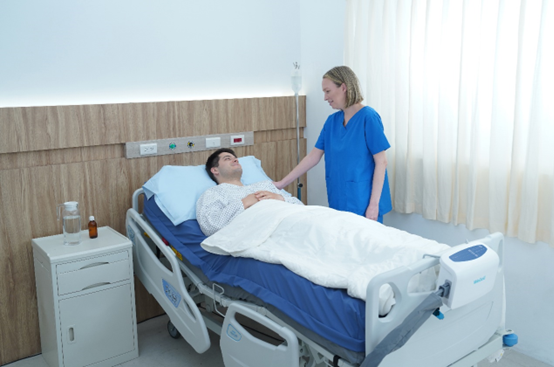Guide to Choose the Best Pressure Relief Mattress

Why is a Pressure Relief Mattress Important?
- Key Benefits of a Pressure Relief Mattress:
Who Needs Pressure Relief Mattress?
| Type | Definition | Design features |
| Active Support Surface | A powered support surface that can change its pressure redistribution properties independent of applied load. | Alternating pressure support surface |
| Reactive Support Surface | A powered or non-powered support surface that changes its pressure redistribution properties only in response to an applied load. | Pressure redistribution foam, static air mattresses, low air loss support surfaces |
Reactive Support Surfaces
- Foam: Composed of foams with varying densities, but may degrade over time, leading to "bottoming out," where the patient sinks through to the base layer.
- Air or Gel-Filled Compartments: Utilize air or gel-filled sections or bladders to redistribute pressure.
- Low Air Loss Support Surfaces: Allow air to escape through small perforations, helping to manage skin moisture levels.
- Air-Fluidized Support Surfaces: Contain sand-like particles that behave like a liquid through forced air circulation.
Key Considerations for Mattress Selection
1. Pressure Injury Risk Assessment
Evaluate
the patient’s risk level
for developing pressure injuries. Higher-risk individuals require advanced pressure redistribution surfaces
to prevent complications.
2. Choosing the Right Mattress Type
For
patients at risk of pressure injuries, pressure redistribution foam mattresses
(reactive) are typically the first choice. However, if pressure injuries
persist or if the patient is at high risk (e.g., individuals in critical care),
upgrading to alternating pressure air mattresses (active), reactive air
mattresses, or air-fluidized beds should be considered. According to 2025 clinical guidelines, where available,
alternating pressure air surfaces may offer greater clinical and
cost-effectiveness for high-risk individuals, especially those who require less
frequent repositioning, such as patients in palliative or end-of-life care,
where comfort is the primary concern.
3.
Microclimate
Management
Support surfaces should help regulate
moisture and temperature to prevent skin breakdown. Low air loss technology is
beneficial for maintaining skin integrity.
4. Customized Fit & Standardized Testing
Choose
a mattress that matches the patient’s
weight, height, and body shape. Use performance-based test data to
ensure effectiveness.
5.
Special Populations
& Institutional Guidelines
Consider
neonates, pediatric patients, and
palliative care patients, who may require tailored support surfaces. Always
follow institutional protocols
and manufacturer guidelines
for proper use and maintenance.

Yuchen
Clinical Marketing Instructor & Physical Therapist, Wellell
Yuchen is a Clinical Marketing Instructor and Physical Therapist at Wellell (formerly Apex), where she joined in April 2024. During her academic journey, she holds a bachelor's degree in Physical Therapy and a master's degree in Brain Science. Prior to joining Wellell, Yuchen worked as a physical therapist in a hospital setting, gaining hands-on clinical experience in patient care and rehabilitation. Her academic background and clinical expertise support her passion for bridging science and practice to improve patient outcomes.
Discover more pressure injury prevention solutions on our website.
Ready to improve patient comfort and safety? Contact our team for expert advice on selecting the right pressure relief mattress.
Related Article:
- Benefits of Low Air Loss Mattress: How It Works and Selection Tips
- Pressure Relief Mattress: The Importance of Comfort and Stability in Support Surfaces

